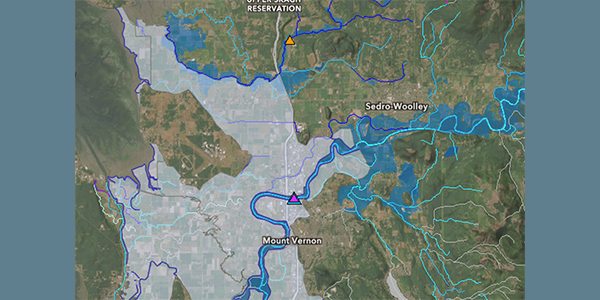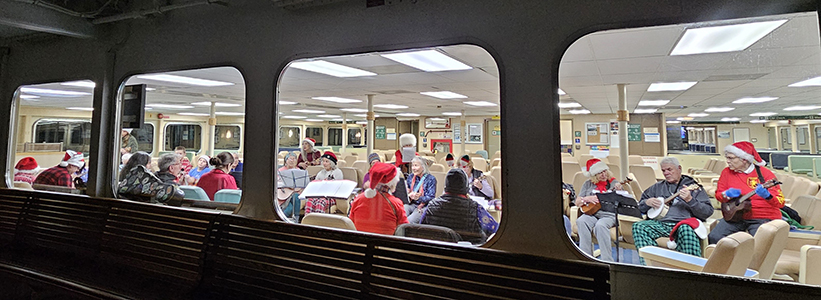— by Joe Symons —
At the San Juan County/Department of Community Development (DCD) Orcas Island workshop held at the Eastsound Fire Hall last Wednesday (Oct 10, 2018), I showed maps that describe the development potential at buildout for rural parcels in San Juan County (SJC). (Maps shown at the end of this article)
The maps are based on the $10k threshold for whether a property is “developed already” or has “development potential”. The as-yet-unofficial new threshold of $42k would increase the development potential by over 1000 parcels; this distinction is not shown on the maps which were created in July. DCD subsequently began the conversation about whether $10k was the right threshold.
For purposes of public awareness, given this is a “first approximation” of the buildout potential for the county, I am not unduly concerned about the difference in threshold values. I trust readers recognize that the Comprehensive Plan Update is constantly being worked on; we can hope that DCD will produce buildout information as part of the Update. So far it appears that SJC is not asking the right questions about buildout or its impact nor is there any pressure on the Council to answer them thoroughly. That’s where readers need to come in.
BACKGROUND:
Dean Dougherty, SJPT GIS guru, has at my request reviewed all rural lands parcels in SJC. He has adjusted their development potential to exclude all conservation easements (LB and SJPT) and any Exempt parcels such as parks, roads, public lands, etc.
He has created maps to show the extent of rural lands development potential. Links to maps showing San Juan County as well as a detailed map for Orcas Island are available at the end of this commentary.
According to Dean’s arc-view stats feature of the SJC parcels database, there are 8035 rural lands parcels that meet the criteria of being available for development, based on an assessor assigned building value of $10,000 or less for that parcel. This would mean that any structures (a pump house, a barn, etc.) would render the parcel as having development potential if they are valued at less than $10k. It implies that there are no livable structures worth less than 10k or, conversely, that if the parcel’s building value exceeds $10k, it has a habitable stucture on it and therefore has no further development potential.
At the Wednesday [Oct. 12] workshop, DCD head Erika Shook told me that DCD is revising its threshold—for whether a parcel has development potential or not based on the assesor’s assignment of building value— upward from $10,000 to a building value of $42,000. The impact of this redefinition is to increase the number of developeable parcels. The maps attached below do NOT show this change: they are based on the $10,000 building value threshold which was the standard at the time the maps were made; consequently the maps under-represent the buildout potential.
The SJC database is complicated; accurate estimates of the additional development potential created by this redefinition are unavailable. Of the ~1000 parcels that fall in the 10k to 42k range, (comprising about 5600 acres), the calculated subdivision potential is 1120 new parcels. To a first approximation this number is likely to be close.
Assuming his modification of the parcel data is correct (Dean gave me the 17,201 parcel database which he obtained from the GIS area of the SJC web site), then about 9150 (8035 plus 1120) rural parcels (assuming a parcel is undeveloped if the structures on it are worth less than $42k) would be available for development at buildout using the current density map. At 2 people/house, the long-standing SJC average, that would be ~18,300 more people IN RURAL AREAS ONLY. The county’s total population today is about 16,000.
No careful development potential at buildout has been done for activity centers. There is huge development potential here, so much so that one wonders if the data could possibly be right.
Of course, these are hypothetical, but nevertheless legally possible, buildout numbers for rural lands. These numbers do not include the population impact of visitors.
Parcels that are already developed (i.e. have structures who’s assessed value is greater than $10,000) or are exempt, like parks, are, in the all county map, shown in a light green/yellow (such as Moran State Park). On the Orcas map, already developed parcels are in a light bluish purple. (use Moran State Park as a clue).
The maps are drawn to a scale allowing for printing up to 36”x48”; the reader can zoom in to a very fine level without losing resolution. If the county has a printer or plotter with large format capability, copies can be made. A large format copy of the all-county map is currently on display in the Orcas Island Library.
Please review and comment. Visually they show the scale and scope (the where) of what remains to be developed in/on rural lands. Obviously there is nothing here about water availability or rural lands density considerations (“rural character”) or many other factors and considerations (like tax implications).
SUMMARY:
The total additional rural development potential (parcels at 2 people/parcel) for SJC at buildout is the current population (16k) plus an estimated population based on the legally potential rural parcel development (~18k) or ~34,000 people.
Data anomalies prevent more than a first approximation estimate of activity center buildout population.
GMA mandates that there must be sufficient land available in activity centers to absorb at least 50% of anticipated development.
Currently SJC activity centers consume ~17,400 acres and contain 3144 parcels. The development potential of these parcels is over 45,000 (equivalent to a population potential of 90,000). The numbers here are so large as to question their accuracy. Even if this potential were cut by 50%, that would be a population increase of 45,000 (for activity centers) over the current estimated size of activity center population. Assuming that half of the 3144 existing activity center parcels are residential and are occupied with 2 people, the total buildout population of activity centers wou be 3144 plus 50% of 90k (45k) or ~48k.
Thus the total estimated full time population at buildout using the current density map would be activity center (48k) plus rural lands (34k) or ~82,000.
The visitor population has traditionally been equal to the full time residential population (i.e., total population is doubled), so the estimated visitor population for several months of the summer would be 82,000 resulting in a full time summer population at buildout of over 160,000.
CONCLUSION:
While there is some data uncertainty, the implications of this growth potential are of such magnitude that sufficient resources should be allocated to calibrate and confirm at least a first order approximation of this county-wide development potential.
Once calibrated, the full impact of this growth potential should be assessed, as requested in the docket request that I submitted for a thorough buildout/impact analysis currently before the PC. (A copy of this formal request to the Planning Commission is available from DCD; I can send you a link as well).
This analysis, once performed, should be reconciled with GMA, with our Vision statement, with our resource limitations (hard resources like water, soft resources like silence and community cohesion), and with our intention to be sustainable.
While I don’t mind doing the work as shown here, I do not represent myself as a planner or data analyst. This work is of such importance that it should be done by professionals qualified to do it. The process of analysis should be made entirely transparent with all assumptions described and justified in simple clear language.
Assuming a common and agreed-upon analysis, steps to accept it as is (i.e., under current regulations, the market is the driving force) or to develop a regulatory framework to modify the development potential to conform to public concerns (i.e, a real plan-driven future) should be discussed and approved by the citizens of the county.
I hope readers understand that what is really important is that SJC needs to determine the buildout population AND the impact of this population as well as the impact of visitors. At the moment this does not appear to be happening nor is there any pressure on the Council to explain in simple clear language what the financial, social, and environmental impacts and costs will be.
I hope readers understand that this whole project is constantly being revised, yet what is really important is that SJC is not asking the right questions nor is there any pressure on the Council to answer them thoroughly. That’s where readers need to come in.
map of San Juan County: https://doebay.net/sunshine/DensityCalculations36x3610Kjs.pdf
map of Orcas Island: https://doebay.net/sunshine/OrcasAdditionalDevelopmentpotential.pdf
**If you are reading theOrcasonian for free, thank your fellow islanders. If you would like to support theOrcasonian CLICK HERE to set your modestly-priced, voluntary subscription. Otherwise, no worries; we’re happy to share with you.**








I’ve just read a rather lucid description of a relatively simple but very-difficult-to -convey-subject to the citizenry.
nice work
…glad you’re not resting on your laurels…
Excellent analysis, timely, and to the point. We really need to see leadership on this.
I think what Joe is saying that we the people ARE the leadership in this case, that needs to help the county ask the right questions, and go down the right path. Excellent as usual, Joe. thank you for asking the right questions and backing up your concerns with concrete data numbers. Impacts need to be part of this conversation – both acute and cumulative.
A buildout study, as Joe suggests, is an essential first step to knowing where we are and what potential growth is in our future. But that begs the question of the second step: what can we do about it? There are many, many small, developed lots of record in the county. Some may have been bought on speculation; some to build on one day as a vacation or retirement home. However, as lots of record, whether they conform or pre-exist zoning, they carry development rights which would be difficult to extinguish, short of a “taking” or else a transfer of those rights to another zone and location—a very difficult proposition. In short, that horse is probably out of the barn.
What we can do something about is large parcels which have the potential to be subdivided under current zoning. There are several ways to go reduce development potential in those cases:
Down-zone them to larger lot size / lower density (again, politically difficult)
Buy them or preserve them under conservation easements, as the Land Bank and Preservation Trust are doing
Encourage higher density development in designated Urban Growth Areas like Eastsound, as the State’s Growth Management Act intends, and as the EPRC is trying to anticipate and plan for.
Hopefully, this presents one framework for possible land use / population outcomes from a 20-year Comp Plan. The essential next step would be for community members to inform themselves about the plan, the potentials and the options, and speak to the future they want to see.